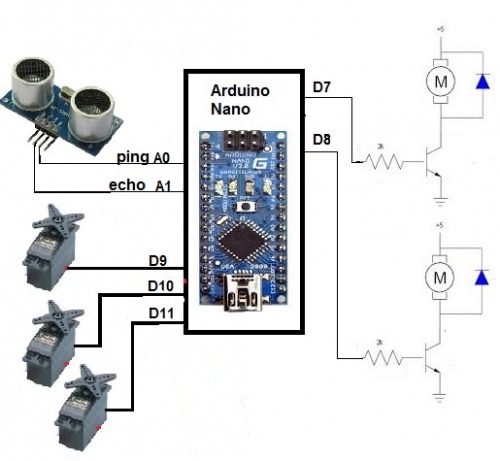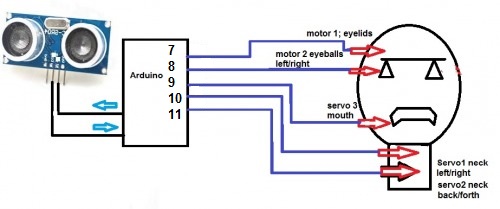Technology has become the part and parcel of everybody’s life and robots are a kind of machines, who are changing our life in so many ways that to from ages. They cook our food, record our shows, and lighten our world. Just because machines don’t have a face, that doesn’t mean they can’t be called as robots. Robots are technically automated motorized tools, a machine that can be used as a friend, pet and can be send to distant planets for discoveries

What Is Arduino & What Can You Do With It?
Arduino is the ultimate tinkering tool, which can be used as a little computer programmed to do stuffs and it enables truly hardcore electronics projects accessible to anyone. Technically, it interacts with the world through electronic sensors, lights, and motors, so artists and other creative techies can easily make their ideas a reality.
Open Source
The best part of Arduino is that the hardware and software are the open sources. It means that if you don’t want to purchase a pre-made Arduino, it is easily available in the form of individual components. It can be bought and made at home. Moreover, there are even clones that functions exactly in the same way are available in the market.
Connectivity
When it comes to a piece of hardware, the Arduino can operate independently like in a robot, or to a computer. It can also be connected to Arduino’s, or other electronic devices and controller chips. Depending on the imagination and willingness to devote some time and effort and to the availability of components, anything can be connected to any electrical device. The main agenda of Arduino is that if you can think of it – the Arduino can do it.
Humanoid Robots
Humanoid Robot, as name defines, is a robot made in the form of a human. The main purpose that is to be served through this invention is to do those work which are dangerous and which cannot be accomplished by humans single handedly. Further, they are used in many different fields such as education for young children, on field marketing for companies, research and development tool and entertainment.
A Humanoid robots can have a torso with complete body parts, and some model may only have a part of the body, for example, from the waist up. Further categories of robots include Androids as humanoid robots that is especially built to resemble a male human, and Gynoids are built to resemble a human female.
Build your own Humanoid Robot
It is possible to create your own humanoid board by fixing simple electronics and an Arduino board. The new simple humanoid could also be a form of output for various types of input based on user control, artificial intelligence, or even dance when a new email arrives.
Components required
Motors:
19 smart servo Herkulex motor.
For interacting:
-
Webcam.
-
Speakers.
-
Microphone.
Micro-controllers:
-
Arduino Mega: it’s used to control the servo motors for the movements of the robot.
-
Raspberry Pi: it’s used for the image processing and voice interaction.
Features of Humanoid Robots
The Humanoid Robots characteristics features include:
. Self-maintenance
. Autonomous learning
. Safe interacting with human beings and the environment
. Avoiding harmful situations to people, property, and itself

Filed Under: Reviews


Questions related to this article?
👉Ask and discuss on Electro-Tech-Online.com and EDAboard.com forums.
Tell Us What You Think!!
You must be logged in to post a comment.